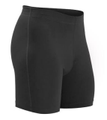Want to get in shape and make new friends? Or maybe you just really enjoy the water. Whatever your reasons may be, let's #learntorow!
Learn to Row (LTR) classes are geared toward those with either no experience or those who need a refresher course. It doesn't matter how young or old you are; all you need is a desire to learn and have fun. Learn to row classes can last anywhere from one day to a few weeks and typically take place in the summer months. However, some organizations do offer LTR classes all year round. Use our
Find-A-Club page to locate an organization near you.
National Learn to Row Day
Many organizational members of USRowing also participate in
National Learn to Row Day (NLTRD), which is held the first Saturday in June. NLTRD is designed to to help organizations promote their LTR programs and to raise national awareness for the sport of rowing. Use our
Find-A-Club page to locate an organization near you that might be offering NLTRD activities.
Why Learn to Row?
Did you know that rowing is a great calorie burner? Research has shown that rowing burns calories faster than biking at the same perceived level of exertion. In other words, it feels easier to burn more calories while rowing than while biking. Rowing is a smooth, rhythmic motion that is impact free. Rowing exercises all major muscle groups and provides aerobic conditioning, as well as strength conditioning.
Best of all, rowing is fitness for life!
What to Expect
During class, participants will learn about the different types of rowing equipment and rowing vocabulary (yes, rowers have own own language!). The first class or two may be land-based, or partially land-based. It can be useful to begin by learning the basics of the rowing stroke on an ergometer, or erg.

After progressing to the on-the-water portion of the learn to row class, participants receive instruction in rowing shells that vary in size from an eight-person sweep boat to a four-person quadruple sculls. Many clubs use a teaching barge, which provides a more stable platform and can seat up to 16 people. If ending up in the water makes you nervous, relax! The larger boats used in learn to row class and novice groups are difficult to fall out of or flip.
Rowing is a very physical sport. You should always consult with a physician before starting any new exercise program. If you have any reservations before beginning a learn to row class, be sure to discuss them with the program director or coach. They are there to help and to make sure everyone enjoys the sport in a safe and friendly environment.
What to Wear & Bring to Class
There are many moving parts to rowing equipment in which fabric can get caught. Wearing a form-fitting, spandex-style unisuit or close-fitting shorts and a tech shirt

is recommended. Sunscreen and water are a must! Nothing can ruin a LTR class more than being sunburned and dehydrated. Other necessary items include a hat or visor, sunglasses, sneakers & socks and a towel.
What happens after LTR?
Once you complete the LTR class, you may be able to register for the next skill level (i.e. novice) or you may be asked to join as a member. It varies by organization, but these details can typically be found on their website. If you are not sure of next steps, don't be afraid to ask.
ADDITIONAL RESOURCES
